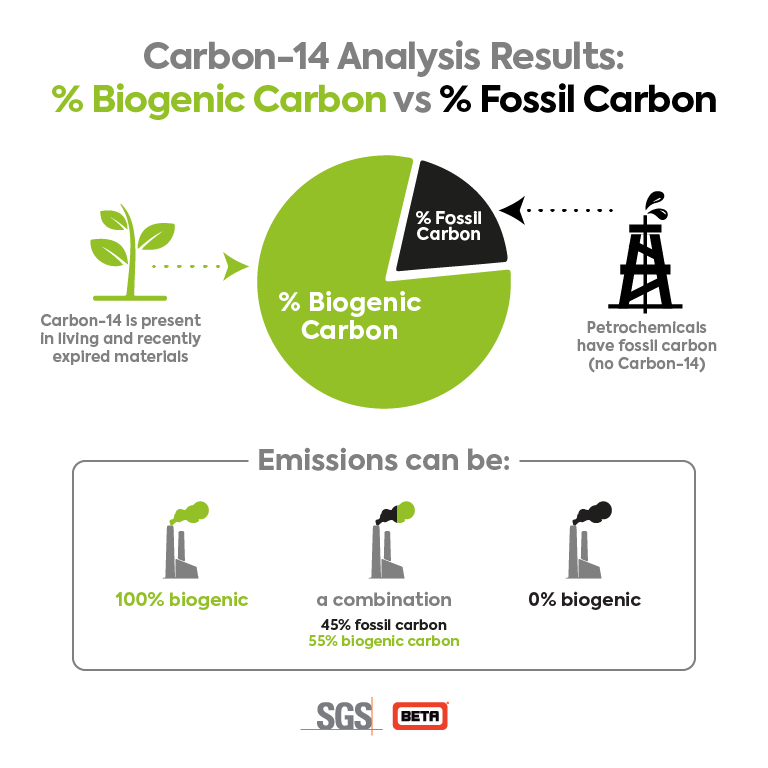Biogenic Carbon Testing of CO2 Emissions and Waste-derived Fuels
Measuring % Biogenic Carbon versus % Fossil Carbon of carbon dioxide emissions and waste fuels.
Request PricingWhat does “biogenic” mean?
Biogenic means containing carbon (organic and inorganic) of renewable origin like agricultural, plant, animal, fungi, microorganisms, macroorganisms, marine, or forestry materials, according to the ASTM D6866 analytical standard.
Fuels and emissions that can be tested
Biogenic carbon testing applies to waste fuels and stack gas carbon dioxide (CO2).
Waste-derived fuels have biomass-derived portions (e.g. paper, wood) and fossil-based components (e.g. plastics). Examples of waste-derived fuels include municipal solid waste (MSW), refuse-derived fuel (RDF), tire-derived fuel (TDF) and sewage sludge.
Measuring % Biogenic Carbon
Carbon-14 is only present in living or recently expired material, while petroleum does not contain any C14. Most of the tested materials are a mixture of present-day Carbon-14 and fossil carbon. The ratio of the amount of Carbon-14 in the unknown sample to that of a modern reference standard is reported as “percent Modern Carbon (pMC). From this value, the biogenic carbon content can be determined. Carbon-14 testing using Accelerator Mass Spectrometry (AMS) is the most effective method to determine the biogenic carbon content.

Quantifying Biogenic Content by Carbon-14 Analysis
- Reach your decarbonization and net-zero goals
- CO2 emitters require testing to comply with greenhouse gas protocols and carbon emissions trading
- Waste-derived fuel users obtain precise and accurate data instead of estimating biogenic fraction of emissions or using acid dissolution tests, both of which can be less accurate than the C14 method
Biogenic Testing Reporting Standards
- ASTM D6866 – % Biogenic Carbon is expressed as a fraction of total carbon
- ISO 13833 – % Biogenic Carbon is expressed as a fraction of total carbon of the emissions
- BS EN ISO 21644:2021 – % Biogenic Carbon is expressed as a fraction of total carbon of the waste-derived fuel
SGS Beta’s Biogenic Content Testing Services
- Standard Service – results are reported in 7 business days or less
- Priority Service – 4 business days or less
Page last updated: January 2024